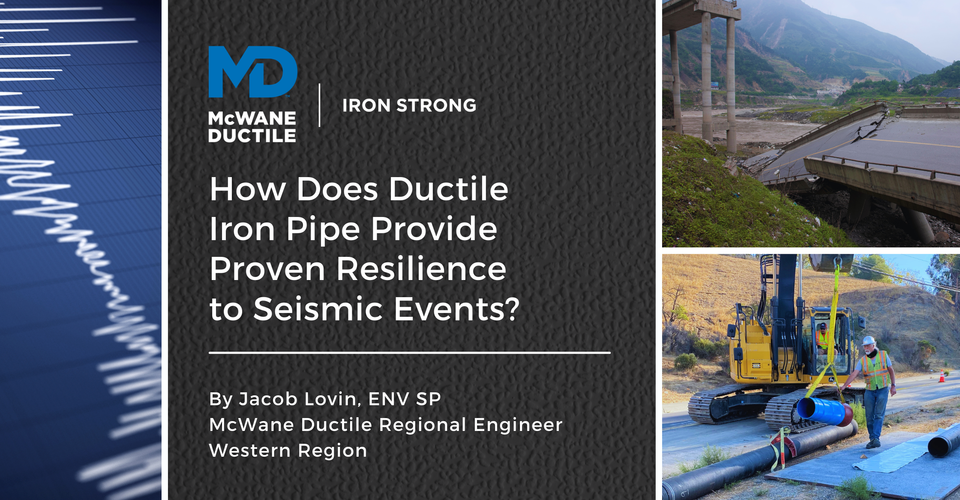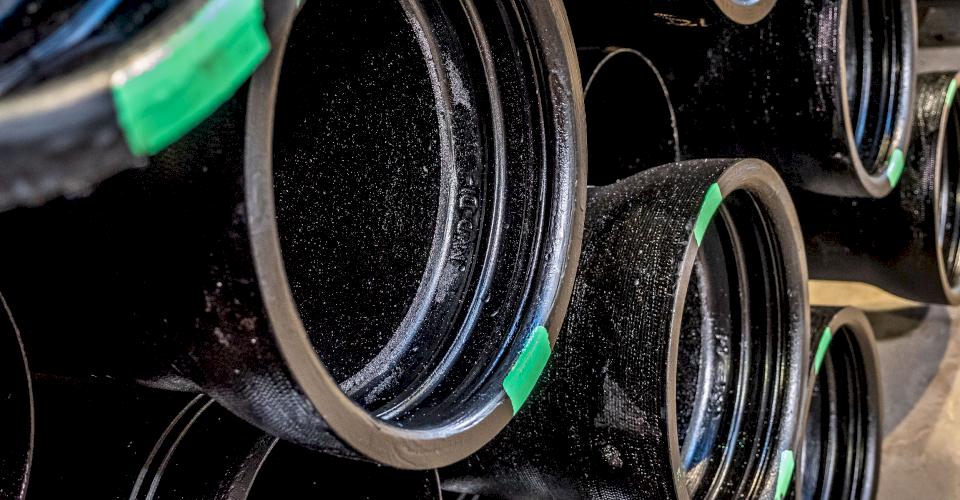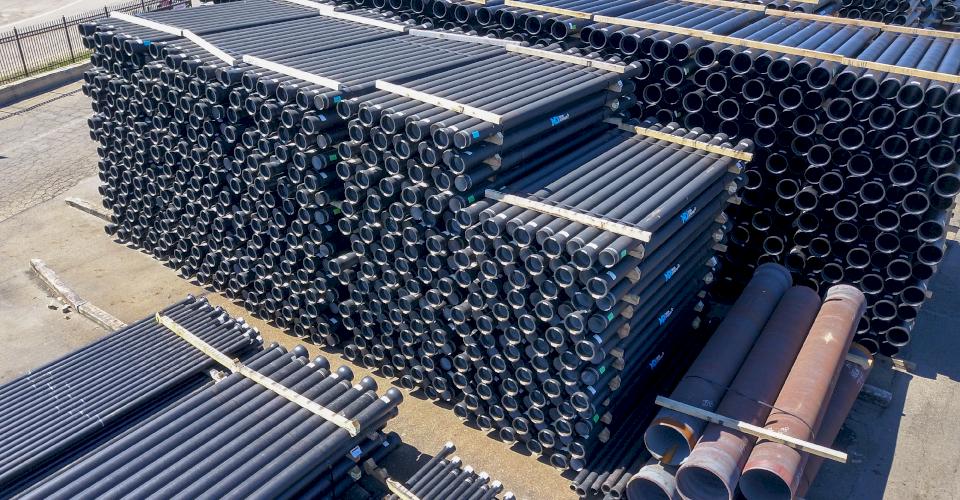-
How Does Ductile Iron Pipe Provide Proven Resilience to Seismic Events?
09/04/2025 In Products Resiliency TechnicalIn regions prone to seismic activity, the resilience of critical infrastructure plays a pivotal role in public safety. Among essential systems, water distribution networks are particularly vulnerable during catastrophic earthquakes, where ground movement and soil liquefaction can cause widespread pipe failure. Ductile iron pipe (DI pipe), however, has emerged as a highly reliable material due to its superior properties, joint flexibility, and proven performance in past seismic events. This #IronStrong Blog examines how the unique design and strength characteristics of DI pipes contribute to their remarkable ability to withstand the intense stresses of major earthquakes, ensuring continuity of service when it is needed most.
-
Ductile Iron Pipe Markings: What Do They Mean?
07/24/2018 In ProductsAll ductile iron pipe manufacturers use markings in a similar manner to assist customers in selecting the right material for the project. This includes verifying the material is suitable for the application intended (i.e. water or sewer) as well as adhering to the project requirements as stipulated by the owner/engineer for pipe class, lining, and exterior coating.
Because the colors used by each manufacturer may vary, we will explain how McWane Ductile applies these markings and describe their need and locations.
-
What Pipe Linings Are Best for Sewer Applications?
11/01/2018 In ProductsArticle last updated 8/12/20
Ductile Iron Pipe is a tested and proven solution to sewer infrastructure needs in America. It’s not a cut and dry solution, though, and you as owners and consulting engineers have several options to choose from.
-
Can McWane Ductile Provide Bonded Coatings?
02/21/2019 In Products Services TechnicalCan McWane Ductile provide bonded coatings? A good question recently posed and more frequently asked due to a greater recognition of potential corrosive environments. To correctly address this question, some other questions need to be answered first.
-
How Much Does Ductile Iron Pipe Cost?
05/31/2019 In Products TechnicalIt is pretty much a daily occurrence here at McWane Ductile for our sales staff to receive price requests on a variety of ductile iron pipe (DI pipe) products. Usually this request is for a specific project, but occasionally design engineers will also ask for “budget pricing” for future underground utility projects. This is typically a pretty simple task, but to provide the most accurate and cost-effective pricing, there are a few items that must be addressed that will ultimately determine the final cost to the customer. This article will review some of those variables that determine the final pricing for your DI pipe needs.
-
Corrosion Protection Recommendations for Ductile Iron Pipeline
05/10/2019 In Products TechnicalDuctile iron pipe (DIP) is one of the most widely used pipe materials in North America. The Design Life is second to no other pipe material due to its robust design. This pipe material is the strongest and most resilient available for water and wastewater utilities providing unparalleled Life-Cycle value.
In many areas, utilities need to consider how to protect these valuable pipelines from corrosive soils. The question is “How can we economically protect these pipelines to meet or exceed the 105-110 year average design life of DIP?”
Latest Posts
- Developing an Asset Management Plan for Your Future Utility or Engineering Organization 12/04/2025 In Comparisons Industry
- Can Joining Water Works Industry Organizations Help You Grow Professionally? 10/21/2025 In Careers WaterWorks
- How Does Ductile Iron Pipe Provide Proven Resilience to Seismic Events? 09/04/2025 In Products Resiliency Technical
- How to Secure Green Reserve Sustainability Incentives Using State Revolving Funding & Ductile Iron Pipe 07/29/2025 In Energy Products Technical










